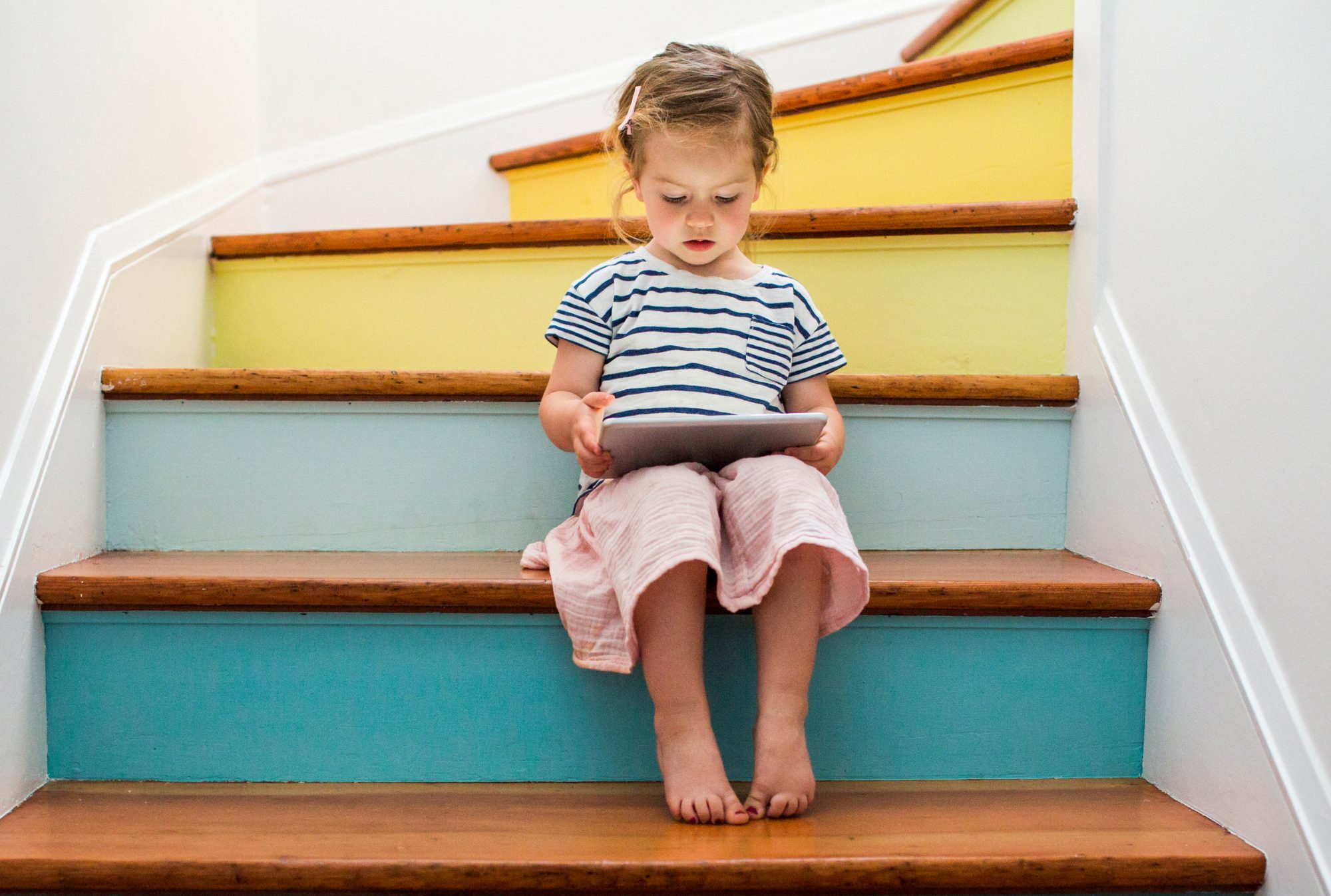
Chances are your family's screen time increased over the past year and a half. There's no shame in that: We are, quite literally, just trying to survive here, and relying more on screen programming for both education and entertainment is just part of that deal. With that being said, we know that screen time guidelines exist for good reason. And now, a study suggests that instances of nearsightedness, also called myopia or short-sightedness, is on the rise in kids because of lifestyle changes during the pandemic.
Researchers analyzed eye test data from nearly 2,000 school-aged children in Hong Kong and found that rates of nearsightedness—or when you can see objects near clearly, but blurry when they are farther away—have increased throughout the pandemic. For the purpose of this study, researchers recruited 709 children aged 6-8 during the pandemic and compared their results to the data collected from over 1,000 children recruited before the pandemic. The rate of nearsightedness through the pandemic was 26.98, as compared to 11.63 percent in the pre-pandemic group.
The researchers behind this study, which was published in the British Journal of Ophthalmology, point out that nearsightedness isn't one of the things we commonly think of when assessing the risks of pandemic living. But when you pull back, it makes sense that we're seeing a relationship forming here, as researchers also identified lifestyle changes that emerged through the pandemic, most notably, less time spent outside and a 2.8-fold increase in screen time.
"When people think of consequences that this unprecedented level of quarantine has on physical and mental health, it is not initially obvious that children's visual development is one of them," says co-author of the study, Dr. Jason C.S. Yam, an associate professor of ophthalmology and visual sciences at the Chinese University of Hong Kong, according to NBC News. "Our study showed that less time spent outdoors and more time spent on near work, including screen time, is associated with faster progression in short-sightedness."
Researchers also looked at changes in axial length, which is the distance between the cornea and the back of the eye. This distancing increases with age in children with progressive nearsightedness. Researchers observed a difference between the children recruited during the pandemic, whose annual estimated axial length change was found to be 0.45 millimeters, as compared to those recruited before the pandemic, who had an estimated length change of 0.28 millimeters.
But it's important to remember that this study observed one group. Its findings don't mean your child will become nearsighted because of your lifestyle during the pandemic. So if you've been using screens more often than you typically would, don't stress out. With that being said, you may want to keep these findings in mind, especially since researchers caution that myopia can increase someone's risk of vision complications later in life. And you may want to head to the eye doctor if your child starts showing symptoms of nearsightedness, including squinting and frowning, frequent headaches, they suddenly start holding books or other objects close to their face, or they complain of blurry vision.
The takeaway here for parents? We're living in—yes, we'll say it—unprecedented times, and if a little extra screen time is what it takes to get through the day, that's OK. At the same time, this study highlights the importance of getting outdoors. So, if possible, try and schedule some more walks around the neighborhood, trips to the park, or time spent playing outside. And as always, if you have specific questions or concerns, check in with you child's doctor.





